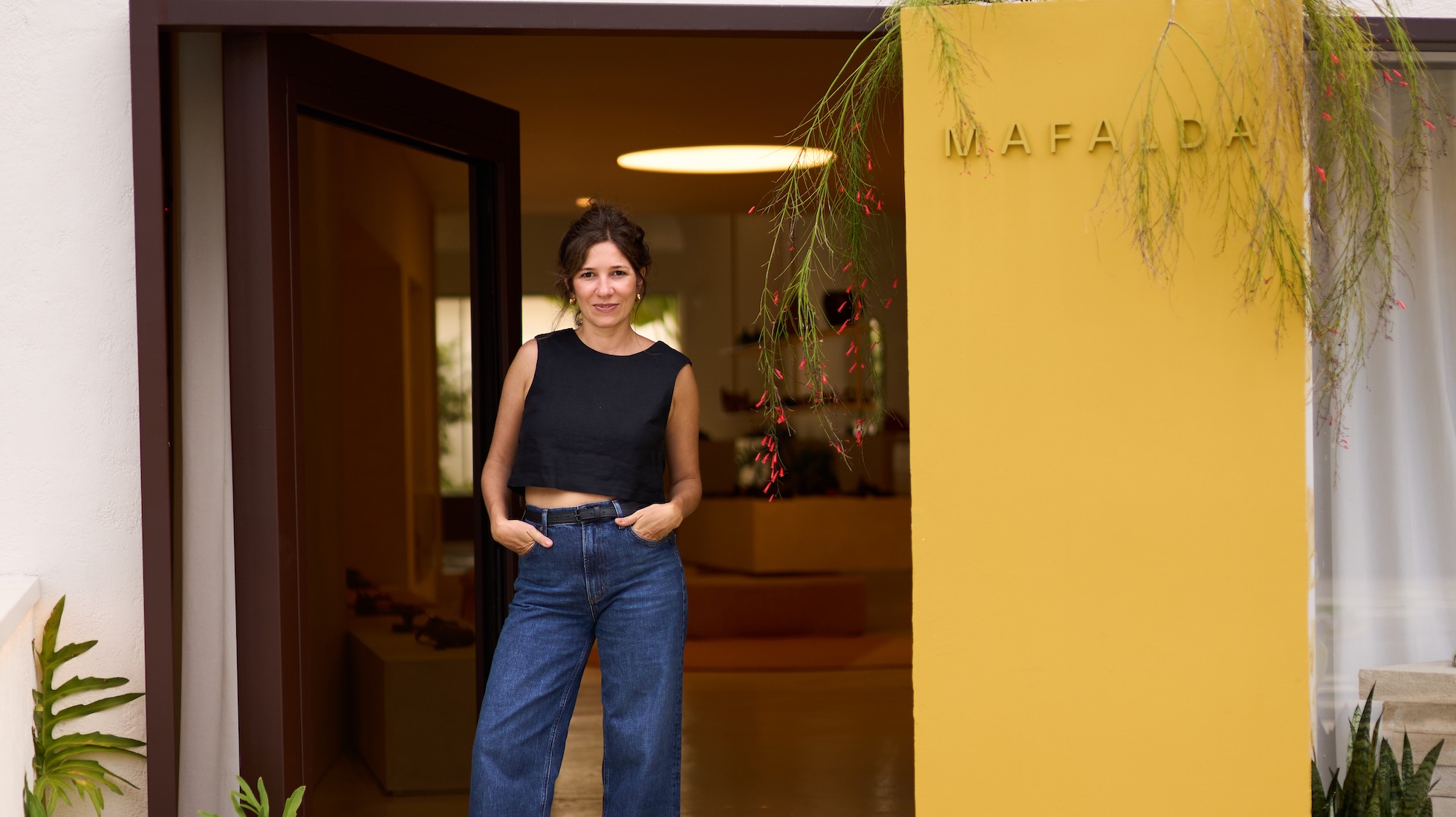It’s one of the world’s most populous cities, so it’s no wonder creativity crackles between São Paulo’s stretching high-rises. With around 12 million Paulistanos going about their daily lives amid the Brazilian metropolis’ iconic architecture each day – walking past Oscar Niemeyer’s curving modernist masterpieces; catching a weekend exhibition between the brutalist walkways of the SESC Pompéia; soaking up the energy of the world’s second-oldest art biennial – finding free-flowing creative juices in all corners and neighbourhoods is almost inevitable.
It’s little surprise, then, that much of the city’s fashion, art, music and design talent is homegrown – and has little desire to leave.
“São Paulo is the city where I was born and raised,” says shoe designer Maria Fernanda Sodre. “It shapes everything I do.” The handmade leather shoes in her atelier, Mafalda, founded in 2010, have always drawn on her hometown for inspiration. Sodre began crafting footwear straight out of high school; by June 2022, her brand had gone international, carrying the spirit of São Paulo as far as the UK, and Brazil’s largest city continues to have a huge influence on her work.
It’s little surprise, then, that much of the city’s fashion, art, music and design talent is homegrown – and has little desire to leave.
“São Paulo is the city where I was born and raised,” says shoe designer Maria Fernanda Sodre. “It shapes everything I do.” The handmade leather shoes in her atelier, Mafalda, founded in 2010, have always drawn on her hometown for inspiration. Sodre began crafting footwear straight out of high school; by June 2022, her brand had gone international, carrying the spirit of São Paulo as far as the UK, and Brazil’s largest city continues to have a huge influence on her work.
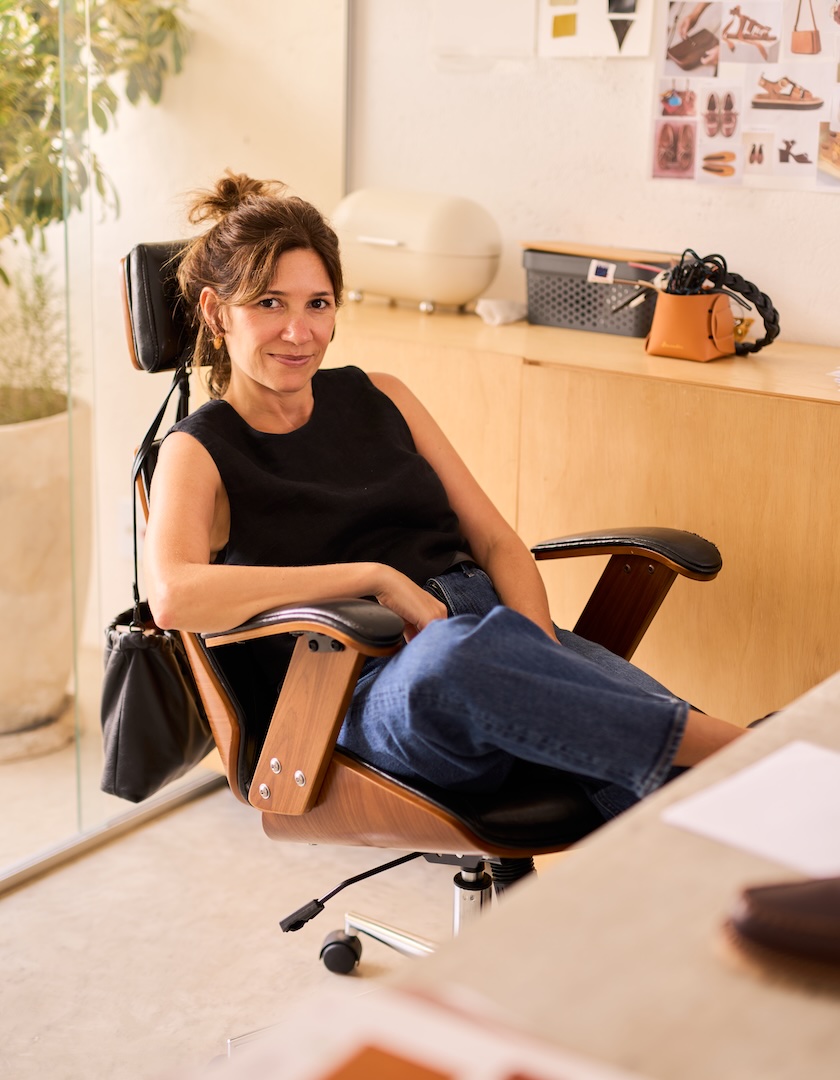
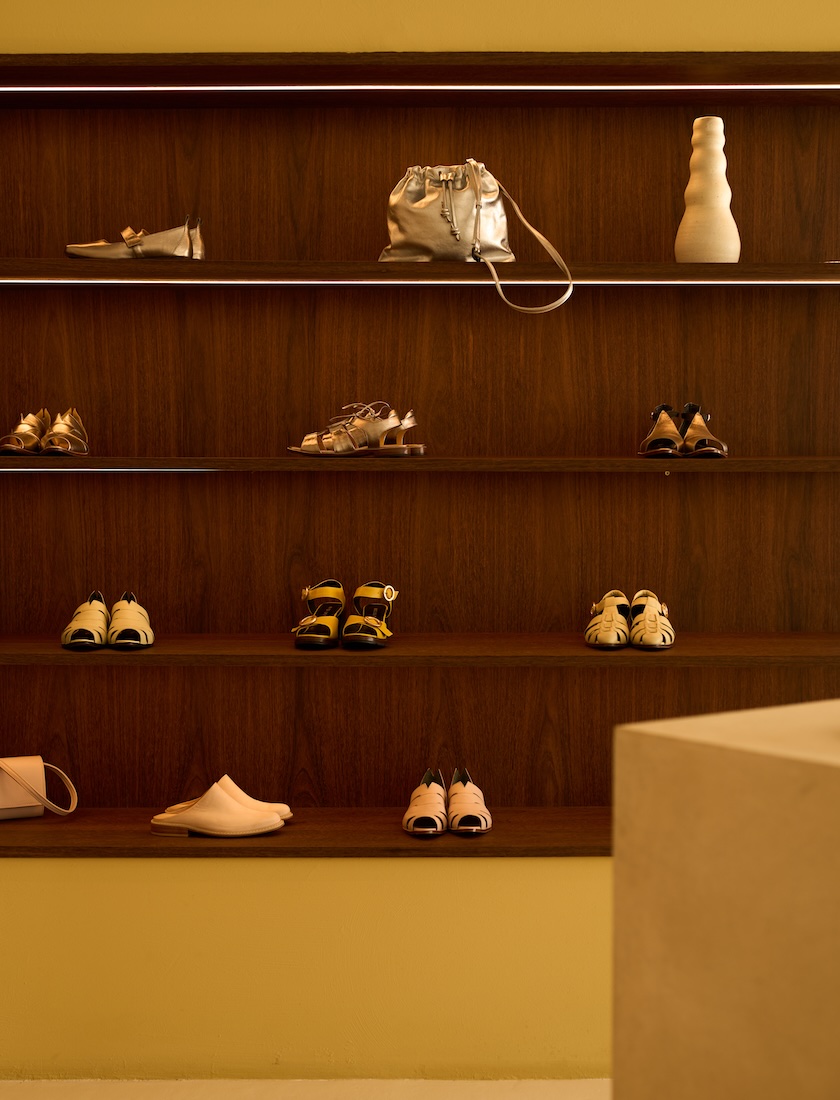
Sodre, left, and the São Paulo Mafalda store
“On one side, there’s the pace,” Sodre says. “The busy, hectic rhythm of São Paulo demands practicality. That’s why I design shoes for women on the go: pieces that are comfortable, sharp, and versatile enough to carry you from work to dinner, or straight from the office to a party. Versatility is at the heart of living São Paulo’s busy life to the fullest.”
“On the other side, there are the aesthetic influences. Brazilian crafts and modernist architecture are deeply present in São Paulo, and they inform so much of what I do. I draw inspiration from geometric lines and minimalist architecture. My shoes are smart, precise, but always elegant. That duality – the city’s energy and its architectural refinement – is at the heart of Mafalda’s identity.”
Having spent decades residing in the city and with ties to all facets of its creative and cultural scenes – from music to food – Sodre knows São Paulo intimately. And nowhere more so than her home neighbourhood of Pinheiros, an artistic district where she lives and works, dreaming up deliciously chunky fisherman’s sandals and bold, cow-print Mary Janes. SUITCASE caught up with her to hear her recommendations for exploring the city, from sculptural hotels and Brazilian bakery favourites to the São Paulo musicians to add to your Spotify.
“On one side, there’s the pace,” Sodre says. “The busy, hectic rhythm of São Paulo demands practicality. That’s why I design shoes for women on the go: pieces that are comfortable, sharp, and versatile enough to carry you from work to dinner, or straight from the office to a party. Versatility is at the heart of living São Paulo’s busy life to the fullest.”
“On the other side, there are the aesthetic influences. Brazilian crafts and modernist architecture are deeply present in São Paulo, and they inform so much of what I do. I draw inspiration from geometric lines and minimalist architecture. My shoes are smart, precise, but always elegant. That duality – the city’s energy and its architectural refinement – is at the heart of Mafalda’s identity.”
Having spent decades residing in the city and with ties to all facets of its creative and cultural scenes – from music to food – Sodre knows São Paulo intimately. And nowhere more so than her home neighbourhood of Pinheiros, an artistic district where she lives and works, dreaming up deliciously chunky fisherman’s sandals and bold, cow-print Mary Janes. SUITCASE caught up with her to hear her recommendations for exploring the city, from sculptural hotels and Brazilian bakery favourites to the São Paulo musicians to add to your Spotify.
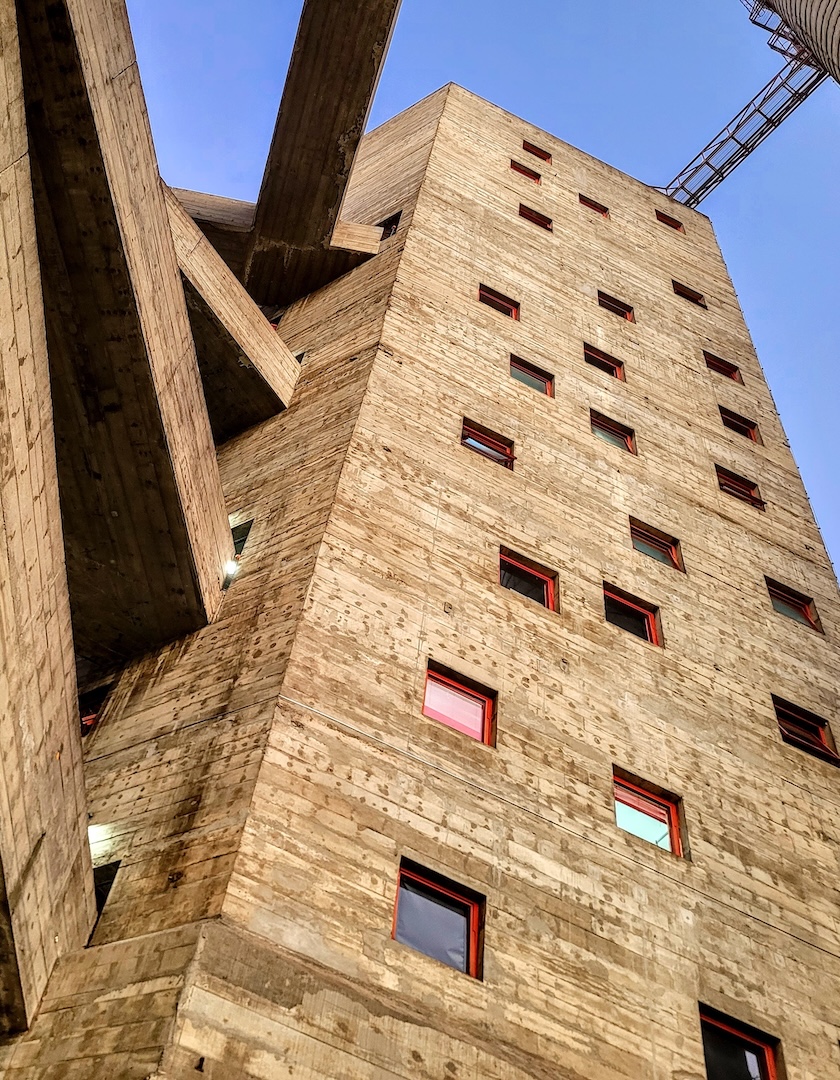
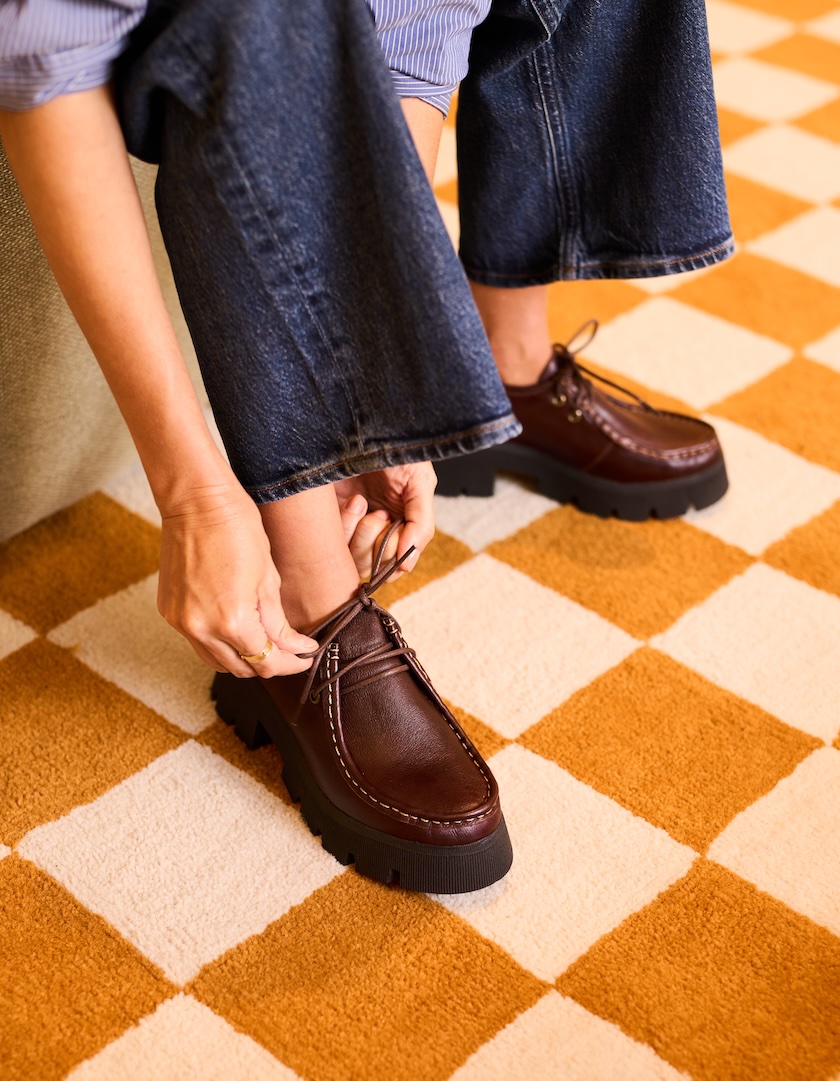
SESC Pompéia, left, and Mafalda’s Naomi Loafer | Credit: Shutterstock/Sergio Agnelo
It’s a vast, vibrant metropolis – the busiest and most cosmopolitan city in Brazil – so you’ll find a wide array of restaurants and cultural programming here. Food, music, theatre, cinema – the city is full of it. There are incredible museums, exciting art venues and beautiful historic landmarks to discover.
After that, I take people for a stroll through Ibirapuera Park, the city’s most beautiful green space. It’s a cultural landmark and home to several of Brazilian architect Oscar Niemeyer’s buildings, including the São Paulo Biennial Pavilion.
Describe São Paulo’s vibe
It’s a vast, vibrant metropolis – the busiest and most cosmopolitan city in Brazil – so you’ll find a wide array of restaurants and cultural programming here. Food, music, theatre, cinema – the city is full of it. There are incredible museums, exciting art venues and beautiful historic landmarks to discover.
Where’s the first place you take visitors?
I usually start with lunch at Maní, just around the corner from the Mafalda atelier in Pinheiros. It’s helmed by the award-winning chef Helena Rizzo. Her contemporary Brazilian cuisine is all organic, imaginative and rooted in local ingredients.After that, I take people for a stroll through Ibirapuera Park, the city’s most beautiful green space. It’s a cultural landmark and home to several of Brazilian architect Oscar Niemeyer’s buildings, including the São Paulo Biennial Pavilion.
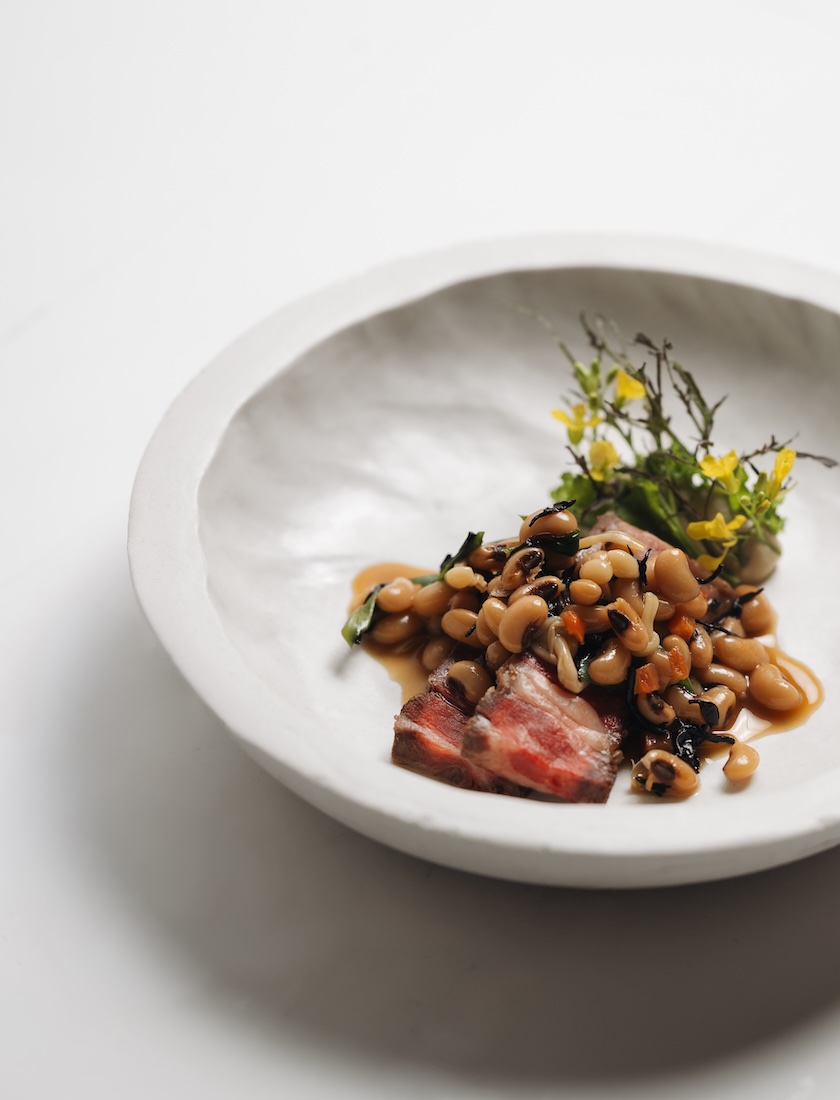
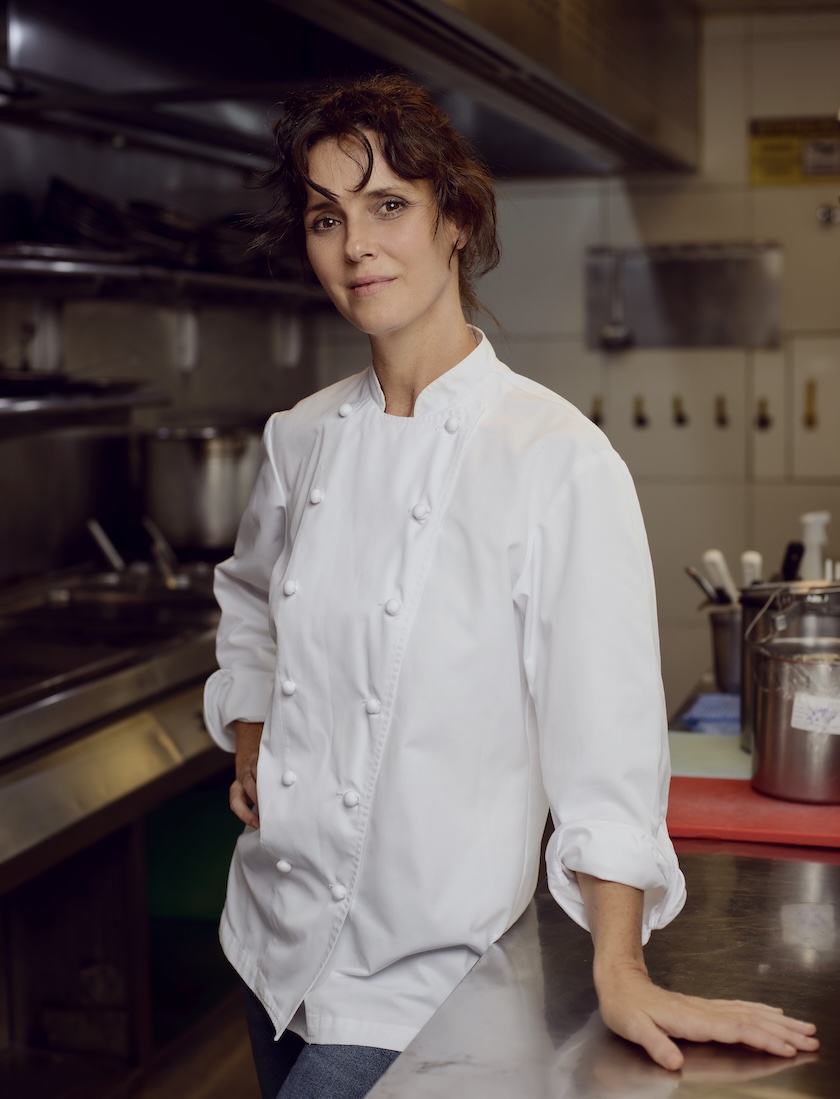
A wagyu, black-eyed peas and aubergine dish from Maní, left, and chef Helena Rizzo | Credit: Juliana Primon
I’d recommend Julice Boulangère in Pinheiros, which employs French breadmaking traditions to create Brazilian bakery favourites. My go-to order is pão na chapa (bread with butter, grilled until golden) – a true Brazilian classic, especially when served alongside fresh orange juice and strong Brazilian coffee. The pastries and loaves are beautiful, too.
We’re looking for a hotel…
I’d send you to Hotel Unique, another of São Paulo’s architectural wonders. Designed by the late Ruy Ohtake, the building is shaped like an inverted arc. Its bold curves are often compared to a ship, or even a watermelon, and the sculptural silhouette and porthole windows make every room feel like part of a work of art. On the rooftop, the pool with panoramic views across the city is an atmospheric place to escape to, taking in São Paulo from above.Where should we head for breakfast?
I’d recommend Julice Boulangère in Pinheiros, which employs French breadmaking traditions to create Brazilian bakery favourites. My go-to order is pão na chapa (bread with butter, grilled until golden) – a true Brazilian classic, especially when served alongside fresh orange juice and strong Brazilian coffee. The pastries and loaves are beautiful, too.
What about dinner?
Bar da Dona Onça. It’s tucked inside the iconic Copan, another architectural landmark by Oscar Niemeyer. In the same building, you’ll also find Galeria Pivô, lots of cosy bars and a nightlife zone – it’s perfect for a full evening out.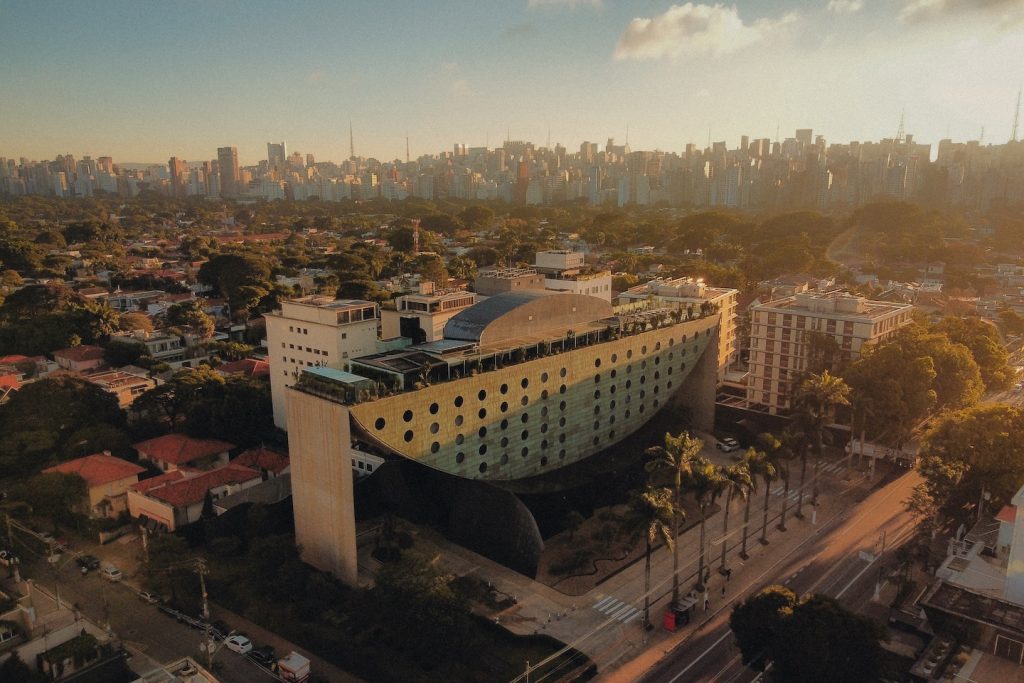
Hotel Unique | Credit: Merson Andrada/Sunset Films
Chef Janaína Rueda’s cuisine focuses on Brazilian classics. I always recommend two dishes: the rabada [oxtail], which is rich and deeply satisfying, and the picadinho de mignon, a traditional dish of cubed beef cooked with tomato, onion and peas, usually served with rice and a fried egg. Rueda elevates it with subtle contrasts, like adding a banana tartare, which gives the dish an unforgettable sweet-savoury balance. To drink, try the inventive caipirinha with cashew fruit – it’s colourful, tropical and uniquely Brazilian.
Also in the neighbourhood is Parque Villa-Lobos, a huge green space on the Pinheiros River, with cycling paths, lawns and beautiful views of the city, and Praça Pôr do Sol – one of the best places for watching a São Paulo sunset. Pinheiros is home to galleries, too – Fortes D’Aloia & Gabriel, Galeria Millan, Raquel Arnaud and Carbono Galeria. Walking around, you’re constantly surrounded by creativity.
Chef Janaína Rueda’s cuisine focuses on Brazilian classics. I always recommend two dishes: the rabada [oxtail], which is rich and deeply satisfying, and the picadinho de mignon, a traditional dish of cubed beef cooked with tomato, onion and peas, usually served with rice and a fried egg. Rueda elevates it with subtle contrasts, like adding a banana tartare, which gives the dish an unforgettable sweet-savoury balance. To drink, try the inventive caipirinha with cashew fruit – it’s colourful, tropical and uniquely Brazilian.
Tell us about your neighbourhood
I live in Pinheiros, just a stone’s throw from the Mafalda store. I love it here. It’s vibrant but relaxed, and full of up-and-coming talent. Independent fashion designers like Irrita, Isolda and Myfots are all based here, alongside galleries and design studios. This area has a young energy and a strong cultural pulse.Also in the neighbourhood is Parque Villa-Lobos, a huge green space on the Pinheiros River, with cycling paths, lawns and beautiful views of the city, and Praça Pôr do Sol – one of the best places for watching a São Paulo sunset. Pinheiros is home to galleries, too – Fortes D’Aloia & Gabriel, Galeria Millan, Raquel Arnaud and Carbono Galeria. Walking around, you’re constantly surrounded by creativity.
Where’s best for an evening drink?
I’d take you to Bargo Mooca, an intimate underground place serving an incredible cocktail menu from Danilo Nakamura. My favourite two are the dirty tequila collins – tequila with Sicilian lemon, olive syrup and club soda; salty and refreshing all at once – and the dryquiri, a bright mix of rum, Tahiti lime, passionfruit and a touch of Campari.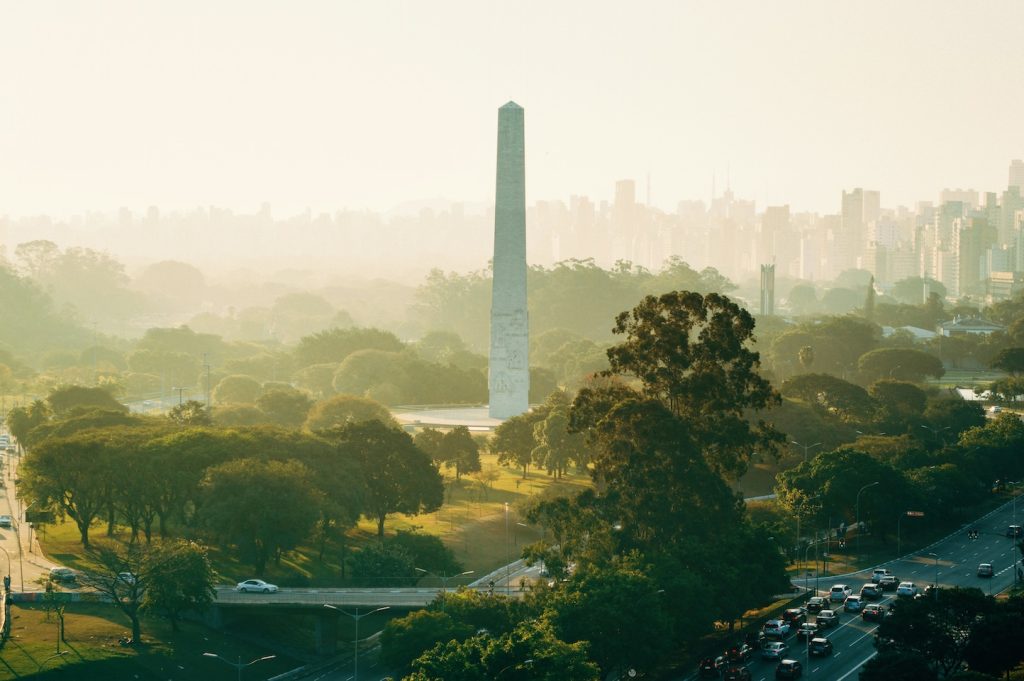
Ibirapuera Park | Credit: Felipe Barradas/Unsplash
On the design side, I love Bossa Furniture, founded by architect Isabela Milagre, which works closely with Brazilian artisans to create collectible pieces that bridge architecture and craft. And for a café that doubles as a creative hub, Futuro Refeitório is great – it's set in a converted warehouse and is relaxed, while always buzzing with people from the neighbourhood.
On the music side, I’d mention Gilsons, who merge MPB [a 60s’-born hybrid of Brazilian classical and contemporary styles], soul and Brazilian rhythms into beautifully harmonised storytelling. Also, take a listen to Luedji Luna, whose sound fuses Afro-Brazilian rhythms with jazz and soul to create music that feels both modern and ancestral. And then, don’t miss Mãeana, a singer-songwriter whose work is both experimental and deeply rooted in Brazilian traditions, blending hypnotic melodies with contemporary sensibilities.
Any shops we should check out?
Mafalda is a must! It’s both my studio and my shop. Then, there’s Pinga, a brilliant multi-brand store that always has a sharp edit of emerging talent.On the design side, I love Bossa Furniture, founded by architect Isabela Milagre, which works closely with Brazilian artisans to create collectible pieces that bridge architecture and craft. And for a café that doubles as a creative hub, Futuro Refeitório is great – it's set in a converted warehouse and is relaxed, while always buzzing with people from the neighbourhood.
Any São Paulo creatives we should be following?
Two artists I’m very excited about are Ione Reis and Renan Teles. Reis works across painting and mixed media to explore Black identity, ancestral memory and the margins of visibility. Renan Teles is an Afro-Indigenous multimedia artist, also based in São Paulo. His work moves between photography, painting, installation and textiles, probing ideas of racialised masculinity and visual memory.On the music side, I’d mention Gilsons, who merge MPB [a 60s’-born hybrid of Brazilian classical and contemporary styles], soul and Brazilian rhythms into beautifully harmonised storytelling. Also, take a listen to Luedji Luna, whose sound fuses Afro-Brazilian rhythms with jazz and soul to create music that feels both modern and ancestral. And then, don’t miss Mãeana, a singer-songwriter whose work is both experimental and deeply rooted in Brazilian traditions, blending hypnotic melodies with contemporary sensibilities.




